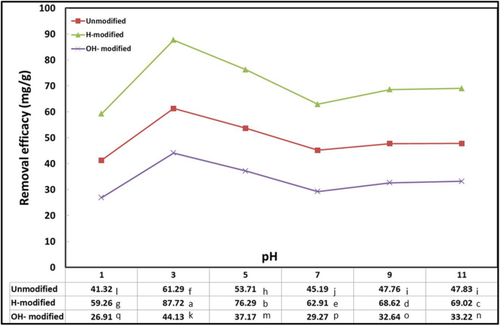Water, Air, & Soil Pollution ( IF 2.9 ) Pub Date : 2024-04-20 , DOI: 10.1007/s11270-024-07073-w Yasmin I. E. Aboulsoud

|
Oily wastewater is one of the most hazardous contaminants that can hurt the ecosystem. There is an urgent need to adopt an efficient, eco-friendly, and low-cost material to replace the old traditional treatment methods of oily wastewater that were very expensive in addition to their relatively low efficiency. Eucalyptus bark is considered one of the materials that are rarely used in this field, although it has the characteristics that qualify it to be a distinguished and promising one. The optimum conditions of using Eucalyptus globulus Labill. (Blue gum) bark in the removal of oil from prepared aqueous solutions were concluded before applying in the treatment of real oily industrial wastewater from New Borg El-Arab City, Egypt. The sequential optimization adsorption results were as follows: initial oil concentration, 500 mg/l; adsorbent dosage, 0.5 g/l; pH, 3; exposure time, 45 min; temperature, 20 °C; and shaking rate, 300 rpm. The pretreatment of biomass with H3PO4 proved it to be superior in the oil removal process where the efficacy reached 450.69 mg/g, while the unmodified form came second where the adsorption efficacy reached 395.86 mg/g, after that the NaOH-modified form came third by efficacy reached 315.85 mg/g. The results of SEM elucidated this order of efficacy according to the porosity of the bark surface. FTIR analysis indicated that OH, carboxylic C = O, and carboxylic C-O groups are the contributing groups in the oil adsorption process for the three forms of Eucalyptus bark. The reusability of Eucalyptus bark using n-hexane for one cycle reached 96.34, 97.13, and 95.83% for unmodified, H-modified, and OH-modified forms, respectively, and for five cycles reached 56.29, 58.01, and 55.81% for unmodified, H-modified, and OH-modified forms, respectively. The application of Eucalyptus bark in the H-form in the treatment of real oily wastewater was achieved by efficacy ranging between 91.46 and 96.23% which proves the excellence of Eucalyptus bark in the treatment of oily wastewater.
中文翻译:

蓝桉对工业废水中油的吸附。 Bark:优化研究
含油废水是可能损害生态系统的最危险的污染物之一。迫切需要采用一种高效、环保、低成本的材料来取代传统的含油废水处理方法,这些方法成本高昂且效率相对较低。桉树皮被认为是该领域很少使用的材料之一,尽管它具有使其成为一种杰出且有前途的材料的特性。蓝桉的最佳使用条件。在将(蓝树胶)树皮用于处理埃及新博格阿拉伯城的实际含油工业废水之前,我们得出了从制备的水溶液中去除油的结论。顺序优化吸附结果如下:初始油浓度500 mg/l;吸附剂用量,0.5克/升; pH值,3;曝光时间,45分钟;温度,20℃;和摇动速率,300 rpm。用H 3 PO 4对生物质进行预处理证明其在除油过程中具有优越性,吸附效率达到450.69 mg/g,而未改性形式位居第二,吸附效率达到395.86 mg/g,其次是NaOH改性形式。形式排名第三,功效达到315.85 mg/g。 SEM 结果根据树皮表面的孔隙率阐明了这种功效顺序。 FTIR 分析表明,OH、羧基 C = O 和羧基 CO 基团是三种形式桉树皮吸附油过程中的贡献基团。使用正己烷对桉树皮进行一次循环的重复使用率,未修饰、H-修饰和 OH 修饰形式分别达到 96.34、97.13 和 95.83%,五次循环后,未修饰、H-修饰和 OH-修饰形式分别达到 56.29、58.01 和 55.81%。分别为H-修饰和OH-修饰形式。将H型桉树皮应用于实际含油废水处理中,其效率在91.46%~96.23%之间,证明了桉树皮在处理含油废水方面的卓越性能。



























 京公网安备 11010802027423号
京公网安备 11010802027423号